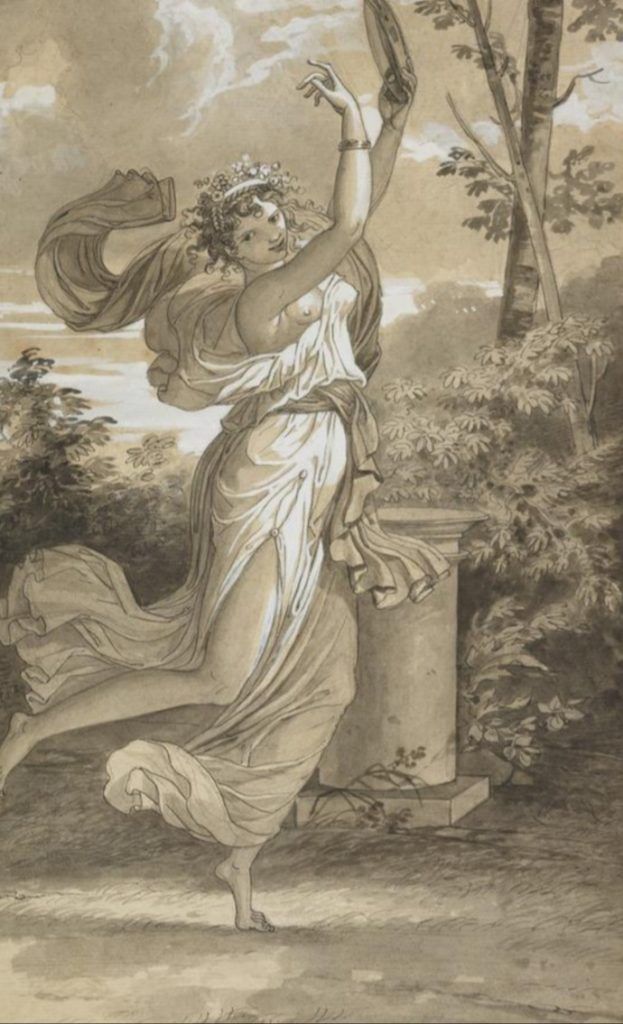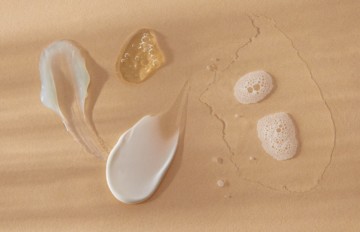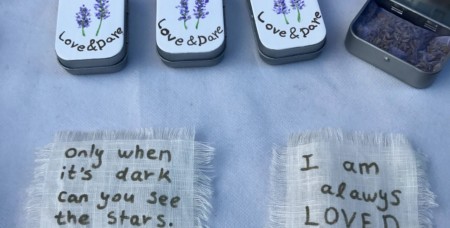
Meeting with divinities: Hermes and the Muses
Nadège Quinssac, is a teacher and passionate about Mythology and Astrology. We’ll meet with her each month to learn more about how Antiquity and Modernity are closely linked. We’ll discover how ancient Culture is linked to our daily and contemporary life, through Mythology by intertwining them both to the Wheel of the Priestess and its Archetypes (See Alexandra Fryda Marty‘s articles) and Astrology.
The Gemini Zodiac sign (May 21-June 20) is associated to the Archetype of the Muse (see Alexandra’s article).
The characteristics of this Archetype and those of the air signs (as the Gemini) are closely correlated with Mercury, a major god in Roman religion, whose namesake planet influences the sign. His Greek equivalent is the god Hermes which is known to be one of the most mischievous gods in Mythology, but his core attributes are also creativity and communication.
We notice the richness of ancient culture in many areas of our lives, as if nestled in the heart of our daily lives, and Mythology often goes together with Astrology. Indeed, celestial cartography is very closely linked to the episodes, to the mythological cycles as the ancient Greeks have transmitted it to us: they even named it uranography, in tribute to Urania, the Muse of Astronomy.

Hermes’s legacy in the Zodiac wheel and the Gemini sign
The Gemini air sign is often associated with the Puer Aeternus, or “eternal child”, the mischievous teenager who experiments and wants to see for himself where his idea will lead him. He’s also very clever, a lively mind who likes to talk, to communicate, to exchange, to debate… Let’s turn to Mythology to identify how is everything linked: Mercury or Hermes, is illustrated in many mythological episodes, while he’s still a very young child…
Indeed, Hermes accomplishes feats as well as childish mischief and gets himself talked about in the Olympus from his earliest childhood. His mischievousness is not lacking, but so is his dexterity and mental alertness. Hermes is the son of Zeus and Maia [1].
One of the most famous episodes recounted in the Homeric Hymns composed in his honor is that one day, at noon, as a young child, he had left the family home and, on the way, found a dead turtle. He immediately had the idea of transforming the turtle’s shell, which resonated when he knocked on it, into a musical instrument: his artisanal, creative skills emerged from this episode. He had the idea to empty this carapace, to stretch two rods of reed to maintain a frame for the instrument that he plans to create and stretched seven guts of ewe to make the strings: the lyre was created.
The same day, his mischievousness pushed him to play a trick on the god Apollo by stealing his oxen and making them walk backwards so that their footprints were not in the right direction, leaving no clue on where they could have gone. But Apollo managed to find Hermes, with the help of an old man who was nearby and asked Hermes to give him the lyre he had just created in return for his oxen, because he loved the melodious sound of this instrument.
Later, Apollo will be very interested in the flute made by the ingenious Hermes and he will get it in return for lessons and apprenticeships on his gifts of prediction. This is how Hermes will benefit from this talent.
Hermes is also the god of knowledge. In Greece, an interpreter was called “hermeneus” which gave “hermeneutics“, which is the search for meaning and the art of interpretation. But it also gave birth to “hermetic“. And Hermes can appear as “hermetic” because he is not easily understood, he remains in a form of ambiguity.
As like any being, Hermes also has dark attributes: cheating, slyness… He was the god of merchants, traders, but also of thieves, which reflects the duality in his personality.
It is for all these reasons that Hermes is considered the god of public speaking, the god of the art of speaking well, and of the art of understanding what may seem obscure, but he chooses to reveal some parts of his personality whenever he wants…
Moreover, it is said that he himself chose to give to a woman for the first time, the power of speech. Her name was Pandora. It is also said that he invented writing, dance and music, that is to say all forms of expression. He represents creativity.
In myth, Hermes was the messenger of the gods but also the one who served them. He was therefore aware of the gods’ discussions and projects. He is linked to freedom of movement and sometimes in astrology, depending on his aspect, he can be a “player” and lead to misunderstandings, delays, hitches in movements and communications.
Sticking to movement and communication, Hermes is the one who leads the souls of the dead to the Underworld (the Psychopomp): he is the link between life and death, between the activity of the day and the silence/dreams of the night. Hermes is also considered as the protector of travelers.
The Muses, women in Antiquity
As we have just seen, Hermes and Apollo are closely linked to the lyre instrument, which Hermes created and gave to Apollo. He will become the god of arts, beauty and aesthetics, accompanied by the procession of the Muses.
The Muses are said to be daughters of Zeus and the goddess Mnemosyne (= Memory), they are the fruit of 9 nights of love between these deities. They are the goddesses of Literature, Music, Dance and all artistic activities. They live on Mount Helicon, or Mount Parnassus (which is also found in the name of the Quartier Montparnasse in Paris, famous for its artists’ studios), or they sit near Mount Olympus (in any case, it’s always a high place, as a link between the Earth and the Sky…). They were venerated in ancient Greek and Roman religion.
The Muses etymologically gave their name to “museum” and “music” and then a Muse became the name of someone who inspires an artist, a brand… Each Muse represents a particular art, they are the guardians of history, the protectors of know-how and the weavers in the transmission of the precious knowledge that forms the artistic and cultural heritage:
- Calliope, which means “beautiful voiced”, is the Muse of philosophy and epic poetry, which are narrative poems about extraordinary doings of gods and heroes such as Ulysses. she holds a stylus, ancestor of the quills, and a wax tablet as a support for writing, but also a volumen, ancestor of the book. Her head is crowned with laurel and decorated with flowery garlands. She was considered to have the supremacy over the other Muses, she embodied the Muse of Muses, and could play a role of mediator in conflicts. The Muses knew how to be ruthless if they were provoked with arrogance: it is said that the Sirens, wanting to compete with them by singing, lost their wings and fell into the abyss of the sea.
- Clio, which means “to make famous”, is the muse of History, weaves the stories of everyone in the History of Humanity and is said to have given its final form to the Greek alphabet. She is crowned with laurel, represented with a stylus and a wax tablet but also a clepsydra, a water clock allowing to signify the time passing.

- Erato, the “one who loves and is loved”, favors erotic and lyrical poetry. Crowned with roses and myrtle, she is represented with many musical instruments, such as the lyre but also, the tambourine, the zither (also associated with Apollo). And Eros (Roman equivalent: Cupid) often accompanies her to designate the love that her poetry inspires.
- Euterpe, whose name means “the one who knows how to please”, presides over music and lyric poetry, she is crowned with flowers and holds a flute, but is also often represented with a lyre and music scores on papyrus around her.
- Melpomène, the “singer”, is the Muse of tragedy and is often represented with a tragic mask (theater mask). She is crowned with branches of vine with an allusion to Dionysus, the god presiding over theater but also the god of feast and drunkenness.

Orsay Museum, Paris
- Polyhymnia, “the one of many hymns”, is the Muse of sacred poetry, hymns, sacred music, nuptial and funeral songs. She inspires the poets by putting in their heart the breath, the pneuma (the ancient Greek word for breath), the inspiration of the divinity, as the term “enthusiasm” indicates “that which enters the thymus”. She is represented in a pensive attitude with a papyrus scroll in her left hand. Her hair is entwined with flowers, pearls, and semi-precious stones.
- Terpsichore, which means “whose dance pleases, whose dance seduces”, is the Muse of danse and chorus. She is often represented with her head crowned with flowers and with a lyre in tortoise shell (as a nod to Hermes).

Saint-Petersburg
- Thalia, which means “the joyous, the flourishing” is the Muse of comedy and idyllic poetry, the light and sparkling poetry of the summer months. Crowned with ivy, she holds a comedy mask in one of her hands, and a stick in the other, symbolizing the shepherds’ walking stick. Sometimes, she can also be represented with a bugle used to support the actors’ voices in ancient comedy.
- Urania, which means “of heaven” is the Muse of astronomy and astrology. She is dressed in an azure tunic, haloed by stars and small spheres, she holds a globe and various mathematical tools such as a compass…
When Apollo first saw these young nymphs, bathed in sunlight, at one with Nature, these girls were playing near a waterfall. Several Greek poets insist on this episode which explains that Muses are often represented near or sculpted on fountains.
They are often associated with nymphs of springs and fountains because their mother, Mnemosyne, Goddess of Memory, passed on to them the ability to remember, to bear witness to history, as in each of the arts that the Muses protect by impregnating each artistic activity with its history, its past, its traditions.
In the Ancient Greek culture, water had this power of memory: a capacity to convey memory, the movement of ebb and flow that stirs, carries, transports, and makes the wounds flow, the bad moments as well as the bests. Water is like a metaphor for life that flows…
The Nine Muses became icons of these precious artistic domains: they are true intermediaries between the divinity and the poet, “poiésis” which means “the one who makes”, the one who weaves the words between them, as between the divinity and any creator.
The Greek poetess Sappho was names “the Tenth Muse” because of her inspiring and innovative creative power, bringing new ways of expressing love in her poems without shame or fear. The poetess taught to women how to fully assume their status as women so that they never forget to make themselves a priority, by trusting their femininity, their intuition, and their creativity.
[1] Maia is the elder sister of the seven Pleiades, daughters of Atlas and his wife, Pleione: the Pleiades gave their name to a group of 7 stars that had a particular importance in delimiting seasons, especially the time of sowing and planting. Maia had a festival in her honor, on May 1st, and gave her name to the month of May.
Cover picture: Polymnia, statue, 2nd c. af. J.C, Louvre Museum, Paris.



















